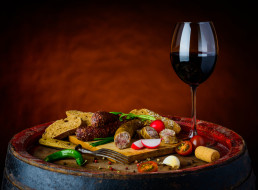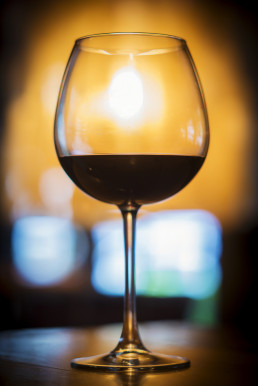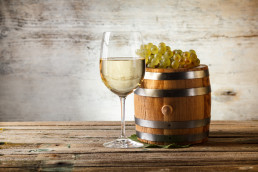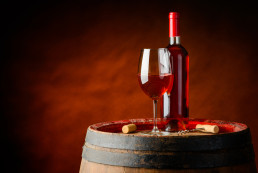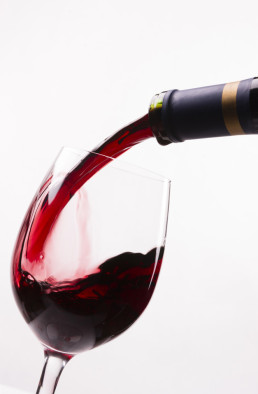Pairing Wine with Food – a 101
There’s no great science going on when you pair up wine with food. The key to matching flavours is surprisingly simple, with just six basic flavour profiles to work with. Eyes down, bottoms up…
Acid with acid
Acid wines and foods work well together, unlike bitter and bitter. If you’re drinking a sweet wine with, say, a tomato flan and a vinaigrette salad, the wine will fall way behind the food and seem flat and flabby. Think about how sharp the food and the wine are and pair them up.
Sweet with salty
If you’re a fan of salted caramel and all that, then think about how well a sweeter wine will go with Asian food, or with salted ham or blue cheeses. Riesling could well be your best chum here.
Bitter with bitter
This combo just doesn’t go. Many people think red wine and dark chocolate are BFFs, but this is a misguided trend. If you must pair red with chocolate, make sure it’s not so dark – you need some fat and sugar to take down the bitterness.
Bitter and fat
This is the eternal steak and red combo. This does work. Think about how to balance those tannins out with some fat – it could be from a steak, or from a vegetarian croquette – but you need some oil or fat to do this. You also need to add a counterpoint – if your red has fruity undertones, add some tomatoes to complement them.
Acid and fat
A dry white or a Champagne helps to de-glaze a fatty dish as well as to add some complexity to the flavors. This is why fatty sauces tend to be made with whites rather than reds. If you’re having a quiche or a cheesecake, you need a light, dry, nimble little white.
Alcohol and fat
This might seem odd, but alcohol is a flavor in its own right, especially in stronger wines and ports. However, often the alcohol taste can come across as acid, not just alcohol, so there’s quite a crossover. Just don’t use a strong wine to cut through fat, as you’ll end up very drunk. Try a port or a tot of strong Zinfandel to accompany a Pavlova or profiteroles.
Can a Nightly Glass of Red Help You to Lose Weight?
Recent research has shown that regular red wine drinkers tend to be slimmer than white wine drinkers and even some non-drinkers, as well as having lower blood pressure and cholesterol.
Is it too good to be true? If it is so that a regular glass of red is the key to a fitter, slimmer future, then how? We’ve been told for decades that alcohol is fattening, that it can damage our hearts and cause other health problems. What is this magic?
Red wine lowers heart risks in the long term
Alcohol does cause blood pressure to rise slightly and blood platelets to become stickier, these effects are short-lived, however. In the long-term, moderate amounts of alcohol – red wine in particular – causes rises in the body’s HDL (high-density lipids, or “good” cholesterol). A glass of red wine a night, then, actually reduces the lifetime risk of heart attacks and strokes.
It turns bad fat into good
This may sound like alchemy, but it seems to be true! A compound in red wine – resveratrol – performs this miraculous feat. In the body, white fat is for energy storage. All those extra calories get deposited there, just in case there’s a famine. We also have so-called “brown fat”, which is a lot more active than white, and resveratrol has the ability to turn white fat cells into brown fat. Brown fat burns itself up to keep us warm, and the more brown fat we have, the leaner (and warmer) we are.
It can stop white fat from forming at all
Just as useful in the fight against flab is piceatannol. A 2012 study in Korea found that this compound, found in red grapes, can prevent white fat cells from maturing. Piceatannol is similar in structure to resveratrol and, like its cousin, is also found in other brightly-colored fruits and berries. This research means that you now have the perfect excuse for that nightly tipple – but remember, everything in moderation!
Cooking With White Wine
Cooking With White Wine
Almost everyone has cooked a spaghetti Bolognese, or made a beef stifado and sloshed a liberal amount of decent red into it, then given it a stir and a good simmer and sat back to reap the rewards. Red is easy to work with as it stands up to the most hefty foods – beef, lamb, dark beans and strong spices – and it’s very forgiving.
A lighter hand
Except, that is, for when you’re cooking something delicate and pale, of course. That’s when you need the lighter touch of a good white wine. White wine requires a bit more subtlety as it tends to go into dishes with more delicate flavors and appearances. There’s no point using a bullying (ahem, sorry, a forgiving) red in your saffron risotto, for example, as it’ll cover up both the flavour of the saffron and the color.
All about the acid
It’s not only about the transparency with white wine, though, it’s simply a trickier animal. For cooking, you usually need crisp whites. Crisp is wine-speak for more acidic, which in turn translates to Pinot Grigio, Sémillon, or Pinot Blanc. Dry sparkling wines are also handy here as they tend to be more acidic.
You can’t use just any old white
What you don’t want to use is the heavier, oakier whites, like Chardonnays or white Burgundies, because these flavors don’t cook well, becoming bitter and not offering much acidic buzz or punch.
If you’re not a big white drinker, a good solution is to buy a bottle of Vermouth for your mussels, or your risottos, as Vermouth lends the same taste and effect as a good dry white, but keeps for longer.
Dessert wines
These sweet, almost syrupy white wines are very rarely drunk these days, instead people tend to use them in – you guessed it – desserts. If you suddenly come into possession of a bottle, don’t despair – poach some pears in it, make an old-fashioned English pudding like a syllabub, or use it to replace some of the sugar and butter in a sponge cake.
Tips for Cooking With Wine
Tips for Cooking With Wine
Wine’s great, isn’t it? You can drink it, hand it over as a housewarming present or as an apology. If the apology doesn’t work you can find new chums with it and you can even use it to make your food better. Seriously, what’s not to love about the stuff? Red, white, in-between; dry, sweet, in-between… Wine, eh?
If you’re new to cooking with wine, you’ll no doubt appreciate these tips to help you navigate the maze.
It’s a good marinade
Wine is slightly acidic, so it helps to soften and tenderize the outside of the meat, allowing all the other marinade ingredients to sneak in behind it. As it’s a liquid, it also helps to keep the meat moist as it cooks.
Wine’s as good as water
Just don’t tell your doctor we said that. Realistically, though, if you see your sauce or your stew getting dry, splash in some wine to thin it out – it’ll add moisture and flavor to your dishes. If you’re trying to lower your cholesterol, wine can help if you replace some of the butter or oil called for in a recipe.
You can even bake with it
Some cakes can stand a drop or two! Dessert wines or sherries are better, as you can imagine, but there are some great recipes for dark chocolate cakes that involve a dash of deep red.
Match the flavors carefully
Wines have food-like flavors, as you probably know, so read the labels and match the tasters’ notes to the food you’re cooking.
White can have hints of vanilla, apple, pear, melon or pineapple, to give a few examples, while red can have undertones of coffee, chocolate, berries or plums.
Follow the recipe
You need to look at how the food is prepared – if you’re doing a spicy lamb dish, then you’ll need a chunky, full-bodied red. A creamy sauce with white fish needs a dry white.
Experiment and have fun
It might be a disaster, then again it might be the Next Big Thing. Try new things out and see what happens, but don’t forget to make notes and let us know how it turned out!
Can You Cook with Rosé Wine?
Can You Cook with Rosé Wine?
Usually when wines get involved with cooking it’s the fruity reds, the crisp whites and the sweeter dessert wines that get picked to be on the team, leaving poor old rosé sat on the bleachers.
However, fashion moves on in food just as it does in clothes and people are wondering what, if anything, they can do with this blushing wine to create a bit of a stir at the dinner table.
Quite a lot, it would seem. This pink wine is created by crushing black grapes – the type used to make the more familiar reds – and leaving the skins in the mix (known as the must) for just a day or three. This imparts some colour and flavour, ranging from a slight pink tinge to an almost-but-not-quite red hue.
Rosé has been overlooked as a culinary ingredient, but it’s time to bring it out of the closet so it can say out loud that it’s pink and it’s proud!
Use it to poach pears
Traditionally red is used in this dessert, and occasionally white, but a nice twist is to use a sweeter rosé to give this subtly-flavored fruit a different, but appealing, shade.
Use it in a stew
That’s right – a stew, like beef or chicken stew, or a thick pasta ragu. Think about it, the color isn’t going to matter, but the slightly darker taste will have an effect.
Try it with salmon
Fish usually gets the dry white treatment, never the red. How about a compromise with a lighter-hued rosé? You’ll need a crisper type, and the color should blend in quite well with the salmon.
Make a granita
Red wine is a bit too dark to have a visual appeal in a granita, and white is just meh, so again, go for the compromise and use a blushing mid-pink rosé in this posh, grown-ups’ snow cone. Remember that alcoholic drinks take longer to freeze, so plan it well if you want to impress your guests.
If it’s Not Good Enough to Drink, it’s Not Good Enough to Cook With
If it’s Not Good Enough to Drink, it’s Not Good Enough to Cook With
It has long been a maxim among foodies, and those who like their drink, that if a wine’s so bad that you wouldn’t want to drink it, you should just bin it rather than relegating it to the cook’s cupboard.
We’ve all done it, though – that dodgy white that your teetotal aunt buys you every Christmas typically ends up in a turkey risotto sometime between Christmas Day and New Year. It gets used up, the risotto’s bearable and no-one gets hurt. It’s the same with a glug of rough red in a Bolognese sauce – it adds a bit of flavour but not so much that you notice the roughness… You wouldn’t, however, tell your wine buff chums that the pasta they’re chowing down has Grape Treader’s Choice Economy Red in because they’d most likely never darken your door again.
So, does this piece of epicurean wisdom hold up, or is it, in fact, foodie snobbery?
It seems it’s the latter, which may come as a shock. There’s a proviso, however – the dish you’re cooking should ideally be one that takes a long time to cook, like a Bolognese sauce, or even coq au vin. You can also get away with it if it’s something that’s cooked at a high temperature, like a risotto.
Basically, any cooking process that boils or evaporates out the alcohol tends to mask, denature or combine the nasty compounds to the extent that you just don’t notice them anymore. The wine just melds with the other ingredients to deepen the taste a bit without making itself too prominent.
This is great news, unless you’re cooking something that doesn’t take long – say mussels in white wine. Likewise something subtle, like a syllabub, will not be forgiving with a corked dessert wine.
To be on the safe side, however, when you’re using wine in cooking, follow the recipe – don’t use a very sweet wine when you need a dry one, for example, as you just can’t boil off those sugars.

